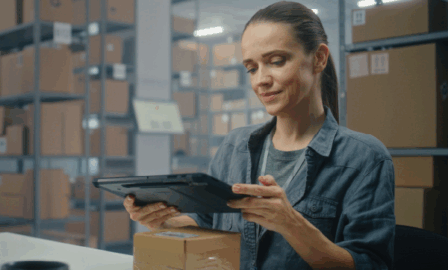Establishing a Product Innovation Strategy to Drive Business Growth
Product innovation is essential for businesses as they drive brand expansion and diversification. In order to stay competitive, many leaders look at product innovation to separate themselves from the pack. With an average of 30,000 new products launched each year, and about 80% of those failing, getting your product innovation strategy right can have a considerable impact on growth.
Given its impact, it’s important for businesses to be thoughtful and purposeful when thinking about their innovation process. Brand strategy resonates with consumers, and leveraging that messaging is important when businesses are innovating. Careful consideration must be taken to ensure innovation supports and enhances messaging to better the business.
While there are more failures than successes, ideas born from deliberate product innovation processes can flourish. CLIF Bar & Company is an example of just that. Known for their foods that provide energy during a person’s most active times, they expanded into the pet space, knowing the consumer engages with their pet as part of their active lifestyle. Even though the end user is different, the expansion leveraged existing knowledge and still aligned with the company’s purpose.
The Pathway to Product Innovation
Innovations need to be intuitive for consumers to accept them. As such, finding the right lanes for innovation is a key to success. When assessing for the right innovations, some key areas businesses should consider are product adjacencies, complementary products, ingredient solutions, prepared meals, etc. RAO’s Homemade is a great example of this by extending beyond sauces and into frozen foods with RAO’s total net sales growing by 30%. Their frozen entrees, such as lasagna and chicken parmesan, are a successful example of premiumization. The entrees are being sold at a higher price and consumers are willing to pay because of the brand. Premiumization is important in competitive markets and allows mature brands to add additional shelf space, which keeps existing customers interested as well as entices new consumers.
Product innovation is key for businesses to move forward, and it’s critical for CP companies to establish and implement a strategy that follows best practices. When consumers view products, they draw associations based on their observations and perception. This necessitates that businesses incorporate consumers’ viewpoints early in the product innovation process rather than at the end. It’s also important to take into consideration that many people are willing to try new things, with 40% of consumers being classified as innovation seekers.
A misstep many businesses experience is they assume their product extensions are logical, while consumers see the extensions as unintuitive. The classic example is when Coca-Cola tried to change the Coke recipe and misjudged how consumers would react, receiving such negative feedback they had to change back to the classic Coke recipe a few short months later. When companies incorrectly identify their actual opportunities, they’re creating a disconnect between the brand and consumers.
Innovation Opportunities Within Your Company
When looking for product innovation opportunities, it’s important to keep it simple and always remember what your brand stands for and what it means to your consumers. Thus, by understanding the consumer permissions for your brand, you’re able to build a long-lasting portfolio pipeline that taps into consumer needs and desires. A common pitfall experienced by businesses is being constrained by their manufacturing capabilities. While recognizing that and other difficulties, the ultimate deciding factor for a product going to market must be consumer-driven.
Given that consumers are at the center of what businesses do – and that they can even assist them with innovation – it’s important to conduct surveys and panels. Receiving feedback before product development or a launch can limit financial downside and identify areas that can be improved before scaling up. There are a multitude of methods that can be used to collect and synthesize consumer feedback at a reasonable expense with practical timeframes. Tools such as online communities, social media, and virtual tastings can enable businesses to quickly receive feedback and act before fully launching.
Product Innovation Strategy: Planning for the Future
Innovation is crucial when planning for the future and must be integrated with every-day activities to ensure progress. To get ahead and lead, it’s important to start thinking of product innovation now and establish how the process will work. Innovation is not necessarily limited to the most creative product, but to natural extensions of products. Time, money, and resources are limiting factors and must be balanced while innovating. Only a well-established growth strategy can minimize risks and maximize the potential of a company’s innovation pipeline.
Subscribe to Clarkston's Insights
Contributions from Addie Schmidt



